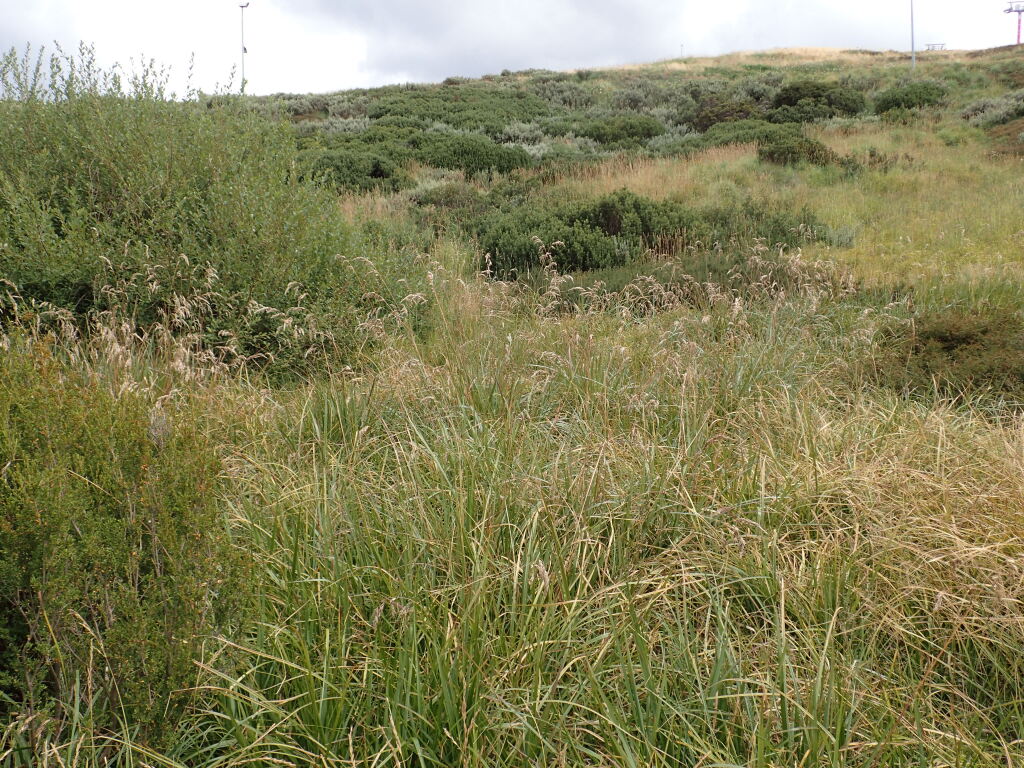Hierochloe redolens
(Sol. ex Vahl) Roem. & Schult. Sweet Holy-grassTufted perennial, culms erect, to 180 cm high. Leaves glabrous and almost smooth; blade flat, up to 40 cm long, 5–12 mm wide; ligule truncate, often erose, 3–6 mm long. Inflorescence a moderately dense panicle, the branches remaining more or less erect, 8–25 cm long; glumes lanceolate, 6–8 mm long, equal or the lower slightly shorter than upper, membranous, shining; lemmas of male florets oblong, about equal to glumes, scabrous, hairy along margins and nerves toward base, both with a straight subterminal awn, to 5 mm long in the upper lemma, the lower rather shorter; lemma of bisexual floret 4–5 mm long, smooth and glabrous below, scabrous and shortly hairy toward apex. Flowers Dec.–Feb.
CVU, GGr, EGU, HSF, HNF, MonT, HFE, VAlp. Occurs in wet subalpine to alpine grasslands and Sphagnum mossbeds throughout the Victorian alps with disjunct occurrences on the Major Mitchell Plateau in the Grampians and along the upper Delegate River near Bendoc in the far east.
Walsh, N.G. (1994). Poaceae. In: Walsh, N.G.; Entwisle, T.J., Flora of Victoria Vol. 2, Ferns and Allied Plants, Conifers and Monocotyledons, pp. 356–627. Inkata Press, Melbourne.
 Spinning
Spinning


